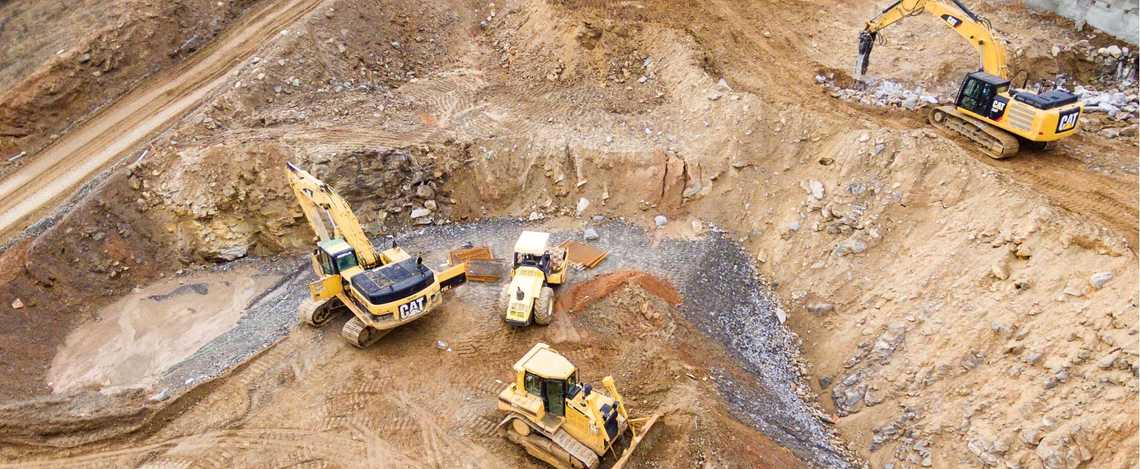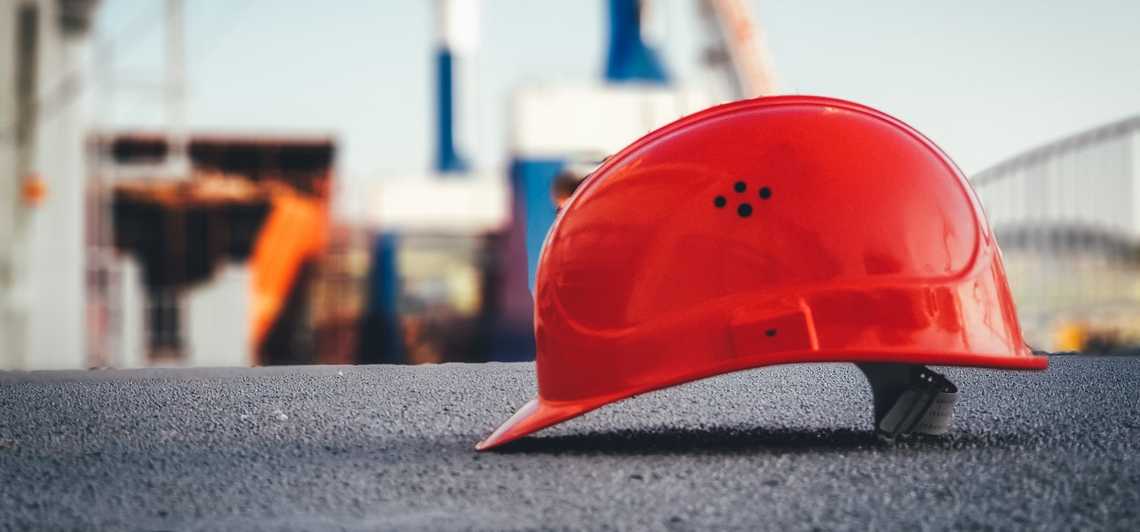Construction areas are one of the most hazardous workplaces. Workers can easily get injured or worse if they’re not wearing protective equipment or following safe practices. Fatal accidents from construction and extraction industries contributed to nearly one-fifth of all workplace-related fatalities in the US in 2020. Most of these injuries are preventable; with the leading cause of death being falls. Other causes include being struck by objects and electrocution.
Aside from causing pain and loss to injured workers, injuries and incidents are costly for construction companies as well.
In this article, we explore an accident in a construction area in Oregon and examine how it could have been prevented.

In this article, we explore an accident in a construction area in Oregon and examine how it could have been prevented.
The accident occurred on May 5, 2016, while constructing a trench around a residential building in Oregon. The company that took the contract had been in operation for around 16 years, and at the time of the accident was employing 11 workers.
The crew was working on replacing a 180-foot sanitary sewer line at the property and on the day of the accident they had around 3 people working in front of the house, around the trench. The rest of the team was in and around the property. It was estimated that the work would have taken almost a week, and the first day went by without any incidents. The accident happened on the second day.
At the time of the incident, the depth of the trench ranged from five feet to 13 feet, 3 feet wide, and around 75 feet in length. The area around the house and the trench were filled with trees and other vegetation. The crew had experience in and was using aluminum shoring along the trench. But the shoring was installed by the foreman who was less knowledgeable and experienced and not by the designated competent person.
The contractor told in a later interview that he had experience working on similar projects and was familiar with the techniques. He also had obtained the relevant permit for the job. During the period of construction, he was the designated competent person.
While no information was available regarding the training the deceased had, the investigation revealed had almost 6 years of experience in similar work. And most of those experience was from the employer at this specific construction company.
There are claims that the company conducted regular safety meetings, but there was no documentation to show the same. There also wasn’t any documentation regarding the safety training the employees may have received.
Later investigations showed that there were no safe ways for the workers to enter or exit the trench. The company hadn’t provided any ladders, ramps, or stairways. The accepted practice in the company was for the workers to jump into the trench and climb their way out through the lowest point. It was also noted that the excavated soil was placed next to the edge of the trench which put more pressure on the trench.
Accident
The accident occurred in a 15-foot section of the trench unprotected by any shoring. At this part, the trench was 10 feet deep. It is assumed that the 29-year-old worker was checking the grading of the sewer line or preparing to put in a pipe connector at the time of the incident.
Later reports suggested severe safety overlaps from the part of the designated competent person. He didn’t test the soil type or other site conditions, nor did he review and consult the manufacturer’s or OSHA’s guidelines on the appropriate protective measures before starting the work. He didn’t perform a visual inspection but rather defaulted his measures to the least stable soil type. For the particular soil type, there had to be a maximum horizontal spacing of 6 feet with a waler system. Neither was met by the employer.
The employer didn’t inspect the shoring on the day of the incident before the work began or between shifts. And he didn’t correct his employees when he saw them standing between the shoring.
At the time of the incident, both foreman and the owner were at the site. The foreman was using a backhoe near the trench while the owner was assisting a dump truck near the site. From where they were standing, they had a clear view of the location of the incident.
During the incident, the trench collapsed and covered the worker in almost 6 feet of dirt. Reports suggest that he was around 5 feet away from the shoring when it happened. Soon after the incident, the co-workers called 911 and attempted to rescue the worker unsuccessfully.
The emergency workers arrived and tried to shore up and stabilize the location first to keep the rest of the workers and themselves safe. They spend hours trying to rescue the worker but were unsuccessful. They were able to retrieve the body of the deceased. Later investigation revealed that the death was due to traumatic compression asphyxia.
Investigation
The investigation found that the major contributing factors to the collapse were the absence of inadequate trench protection as well as entry or exit mechanisms. The spoils from the excavation kept too close to the trench were also shown to have contributed to the incident.
The excavation company was also found to have a culture of unsafe work practices. There were no records of any safety training provided to the employees. And there were no records of any safe practices at other job sites either.
In this particular incident at least, there were no soil tests performed before excavation, and safety measures were not implemented properly. At the site of the incident, the trench safety measures were not implemented by the trained and experienced personnel but were rather delegated to the foreman. The protective measures were implemented without consulting the manufacturer’s specifications and without referring to the OSHA recommendations.
The employer also didn’t perform any inspections before the work started or between the different shifts.
What could have prevented the accident?
The particular incident could have been prevented if the crew and the owner had placed more emphasis on safety. While we can point out specific aspects of the excavation process that contributed to the cave-in, all of them come down to the crew and the company lacking a safety culture.
The company should have conducted regular training on safe operating practices. They should have been trained on using safety equipment and building a safe work environment. The later investigations suggested that the employees were unaware of the safety risks in the environment.
The company should have paid more attention to regular inspections and walkarounds to make sure the crew was following safety practices. Regular walkarounds could have spotted the unsafe working conditions and practices which led to the accident.
The accident investigation also showed that the company didn’t have established procedures to assess the safety concerns around a work site. They didn’t conduct a soil quality assessment or examine other safety risks. They appear to be operating in an ad-hoc manner when it came to the safety of the workers and the workplace.
The organization and the crew would have benefited from well-defined procedures for different work environments and operations. For example, they could have made a list of tests they have to perform and the potential safety concerns they need to look out for at the excavation site. And by going through them step by step, they could have ensured that they didn’t miss any safety issues.
It was also seen that there was no clear division of responsibilities in the organization. Even though there was a designated expert, they didn’t perform their duties to the fullest extent and handed over some to less trained crew members. By maintaining clarity on what everyone was supposed to do, the company could have ensured that all the t’s were crossed and i’s dotted when it came to safety.

Best practices for construction safety
Here are some of the practices that can improve safety at a construction site.
Conduct regular inspections and walkarounds
Even when there are strict rules and procedures for safety in a construction site, over time, there may be lapses. People may fall into a habit of ignoring routine safety violations all of which can culminate in an accident. Workers may start prioritizing convenience and speed over safety and may even operate equipment in unsafe conditions. Regular inspections and walkarounds will ensure that the safety standards are maintained without fail.
Use extensive and detailed checklists
The memory of the human brain is not a reliable enough tool when it comes to safety. While we can and should keep some emergency protocols in our heads, we shouldn’t rely on our memories in the long run. People may forget steps or even ignore them over time which can cause safety lapses. With checklists, you can be sure that all the steps are followed. And you can keep them as records for later safety audits.
Conduct equipment maintenance regularly and ensure its in proper working order
Equipment failure can cause serious accidents, injuries, and even death. Make sure that the maintenance cycles are properly carried out and that employees are trained to properly use them. This applies to the equipment used for work as well as other safety devices. Check the equipment before using it.
Use safety gadgets and tech appropriately
Many technologies and devices can significantly improve safety in the workplace. This includes everything from fire extinguishers to face masks. Apps like TargPatrol can help coordinate the activities at a construction site and ensure that proper safety protocols are followed. Make sure that the employees have access to this equipment and know how to handle them.
Built a safety culture within the organization and workplace
One of the recommendations from the incident report in the above case study was to ensure workers can speak up when they spot safety violations. In many companies, workers and managers often prioritize speed, cost, and convenience over safety. This means the safety restrictions are regularly overridden leading to accidents and injuries. But organizations have to prioritize safety and this should come from the management. They have to realize that safety reduces expenses and the message should be clear to the workers.
By building a safety culture where everyone prioritizes safety, organizations can reduce accidents and injuries significantly.
Check out TargPatrol - the ultimate safety app for construction sites
TargPatrol was designed to make safety walkarounds and inspections more streamlined in the workplace. The app lets organizations design extensive safety checklists and assign duties and responsibilities easily. And with NFC and RFID tech, construction companies can automate many of their safety-related activities. Check out TargPatrol, and build a safer work environment.


